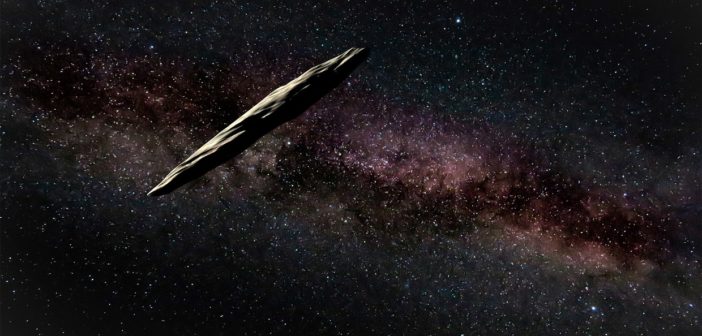Editor’s note: In these last two weeks of 2020, we’ll be looking at a few selections that we haven’t yet discussed on AAS Nova from among the most-downloaded papers published in AAS journals this year. The usual posting schedule will resume in January.
Destruction of Molecular Hydrogen Ice and Implications for 1I/2017 U1 (‘Oumuamua)
Published August 2020
Main takeaway:
One more potential explanation for the strange behavior of interstellar asteroid 1I/2017 U1 (‘Oumuamua) has been dashed thanks to a study by Thiem Hoang (Korea Astronomy and Space Science Institute; Korea University of Science and Technology) and Abraham Loeb (Harvard University). Hoang and Loeb show that an ‘Oumuamua-sized body made out of molecular hydrogen ice could not have survived the interstellar journey from its birth site to our solar system.
Why it’s interesting:

Illustration of outgassing from the surface of interstellar asteroid ‘Oumuamua. [ESA/Hubble, NASA, ESO, M. Kornmesser]
What this means for dark matter:
The implications of this hydrogen challenge extend beyond ‘Oumuamua. Primordial snowballs — theorized bodies made of molecular hydrogen ice in the early universe — have been proposed as one potential component of dark matter. But Hoang and Loeb’s work shows that such snowballs are unlikely to have been able to form, and even if they had, they would be unable to survive to present day. This suggests we must look elsewhere — both for an explanation for dark matter and for an explanation for ‘Oumuamua’s mysteries.
Citation
Thiem Hoang and Abraham Loeb 2020 ApJL 899 L23. doi:10.3847/2041-8213/abab0c

